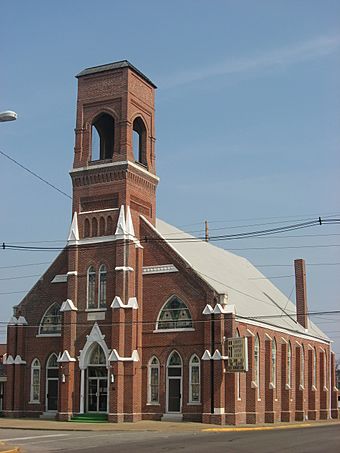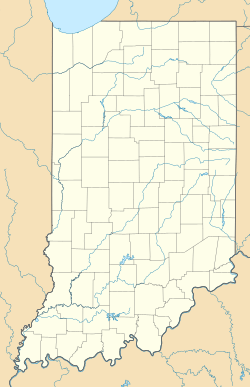Liberty Baptist Church (Evansville, Indiana) facts for kids
Quick facts for kids |
|
|
Liberty Baptist Church
|
|
 |
|
| Location | 701 Oak St., Evansville, Indiana |
|---|---|
| Area | less than one acre |
| Built | 1887 |
| Architectural style | Gothic |
| NRHP reference No. | 78000058 |
| Added to NRHP | December 8, 1978 |
The Liberty Baptist Church is a special and historic church located in Evansville, Indiana. It's known for its beautiful red brick building at 701 Oak Street. This church was started in 1865 by a group of African-American people who had been enslaved.
A Church with History
The Liberty Baptist Church has a long and important history. It was founded shortly after the end of slavery in the United States. This made it a very important place for the African-American community in Evansville.
Building the Church
The first church building was sadly destroyed by a big storm called a cyclone. But the community worked together to build a new one. The current church building was finished in 1887. It was built in the Gothic Revival style, which means it has features like pointed arches and tall windows, similar to old European cathedrals.
A Recognized Landmark
Because of its important history and unique architecture, the Liberty Baptist Church was added to the National Register of Historic Places on December 8, 1978. This list includes buildings, sites, and objects that are important to American history. Being on this list helps protect the church and recognize its value.



